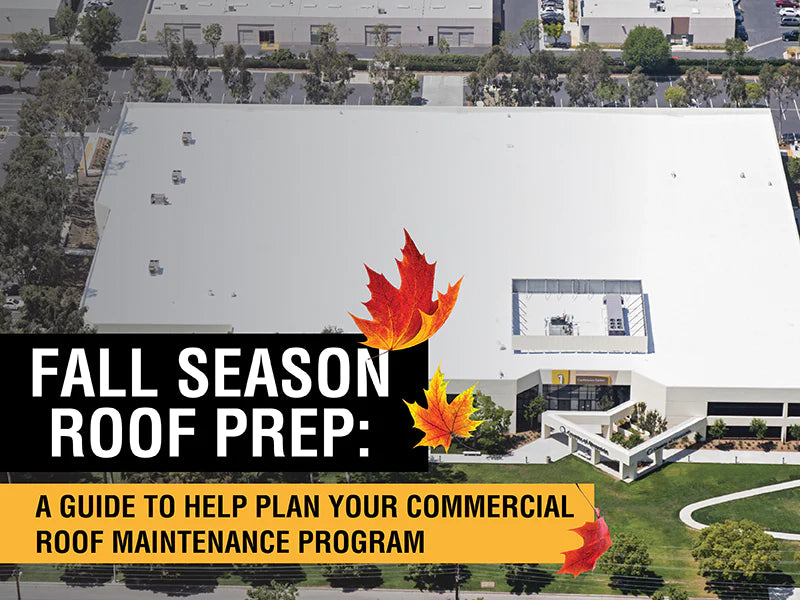It's important to prepare commercial roof's for every season—and fall is no exception! Don’t let the supply chain disruptions slow down your crews. Keep your teams working and on the roof through maintenance and winter preparation programs.
Taking notes from our Spring Cleaning Guide, we've rounded up seven key areas of concern that you should be adding to your commercial roof maintenance program.
-
Roof Membranes and Flashings:
Ensure all flashing and membranes are in good condition. Check for signs of stress, cracking, splitting, wrinkles, blisters, etc. Remove any foreign matter such as balls, shoes, tools, branches, oils, chemicals, liquid, or other objects. Then, clean the roof membrane and closely inspect for signs of physical damage.
-
Gutters, Drains and Scuppers:
Because these are the main avenues that rainwater travels off your roof surface and is directed away from the building, it is crucial that these areas are inspected and maintained. Clean and remove any debris clogging or obstructing the flow of water. Look for any signs of cracking or splitting of the membrane around your drains and scuppers. If anything is noted, they must be repaired immediately by a qualified roofing contractor.
-
Penetrations:
Inspect penetrations for signs of wear. Ensure that the base of the penetration remains completely sealed and attached to the roof membrane.
- Pitch Pans:
Check all pitch pans for shrinkage. As most sealants shrink over time, water may begin to sit on the top of the pitch pan causing rust, leaks, and deterioration.
- Metal Flashings:
Inspect all metal flashings, counter flashings, copings, seams, joints, gravel stops, edge metal, and other areas to ensure they are secure and free of rust or deterioration. Any unsatisfactory conditions should be repaired as soon as possible. - Rooftop Equipment and Accessories:
Inspect all rooftop equipment for deterioration and areas that are prone to water penetration. This includes HVAC equipment, duct work, curbs, skylights, etc. - Expansion Joints:
Check all expansion joints for deterioration, wear, and defects. Check the metal components to ensure they are fully secured and free of rust. Make sure the expansion joint is still flexible and resilient. Look for any signs of cracking or splitting while manually flexing the joint.
Conducting a roof inspection twice a year is a good rule of thumb, but more frequent inspections should be taken if your maintenance program roof is subject to unusual conditions.
It’s important to identify the problem areas of a commercial roof and take the necessary steps to ensure it can last throughout the season. A roof that is properly maintained will help prevent the stress of costly emergency repairs.
Need help with planning your maintenance program? Contact us today!


